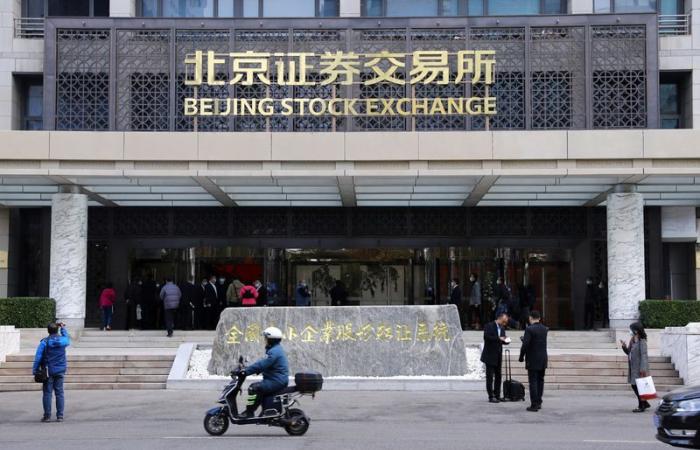Asian stocks rose on Tuesday, while U.S. bond yields and the dollar remained off their multi-month highs, as traders await President-elect Donald Trump’s Cabinet selection and seek to gauge prospects for policy easing. Federal Reserve.
Technology stocks advanced, tracking Wall Street’s recovery from last week’s big losses, although Nvidia’s upcoming results on Wednesday limited the scope of any big moves.
Markets have reduced bets for a quarter-point cut in interest rates at the Fed’s next meeting in December to less than 59%, down from 62% a day earlier and more than 65% a day ago. is a week away, according to CME FedWatch.
Analysts view Mr. Trump’s planned fiscal spending, increased tariffs and tighter immigration as inflationary, which could hamper the Fed’s rate cuts, which are already hampered by a series of resilient economic data.
Mr. Trump has begun making appointments, filling positions in health care and defense last week, but key positions for financial markets – Treasury secretary and trade representative – have not been made. yet been announced.
Japan’s Nikkei added 0.2% by 0129 GMT, while South Korea’s Kospi and Australia’s benchmark index each rose 0.1%.
Hong Kong’s Hang Seng rose 0.8%, and the mainland blue chips gained 0.3%.
US S&P 500 futures fell slightly, but after the index rose 0.4% overnight.
The MSCI world stock index ended a four-day losing streak on Monday.
“With a lack of data and a lull in market-influencing news…the marginal driver of asset prices right now is how the incoming Trump administration will impact economic conditions, international trade and global geopolitics,” said Kyle Rodda, senior financial markets analyst at Capital.com.
“At the same time, markets are trying to estimate the impact of these policies on interest rate setting, particularly on the Fed, with markets moving the magnitude of previously expected rate cuts back down the curve.”
U.S. Treasury bond yields continued to fall overnight, with the two-year yield falling to 4.278% and the 10-year yield falling to 4.412%.
This kept pressure on the dollar, which remained near its overnight low against its major counterparts. The dollar index, which measures the currency against a basket of six other currencies, was steady at 106.20, close to Monday’s low of 106.12. It hit a one-year high at 107.07 on Thursday.
The dollar lost 0.35% to 154.165 yen, while firming slightly to 1.0591 dollars per euro.
Bitcoin, which hit a record high of $93,480 last week due to bets on more favorable regulation of cryptocurrencies under Trump, continued its consolidation throughout the week around $90,000, last trading at around $90,960.
Safe-haven gold held steady at $2,614.80 after jumping nearly 2% on Monday, its biggest one-day gain since mid-August, on dollar weakness and heightened concerns regarding the conflict between Russia and Ukraine.
In a significant reversal of Washington’s policy, President Joe Biden’s administration has authorized Ukraine to use U.S.-made weapons to strike deeply at Russia, two U.S. officials and a source familiar with the matter said Sunday. decision.
The Kremlin said on Monday that Russia would respond to what it called a reckless decision by the Biden administration, after warning that such a move would increase the risk of a confrontation with the US-led NATO alliance. UNITED STATES.
Escalating tensions continued to push both crude oil benchmarks higher on Tuesday, following gains of around $2 a barrel each in the previous session.
Brent oil futures added 7 cents to $73.37 a barrel, while West Texas Intermediate oil futures were at $69.26 a barrel, up 8 cents.
Crude was also supported by the closure of Norway’s massive Johan Sverdrup oil field due to a power outage.






